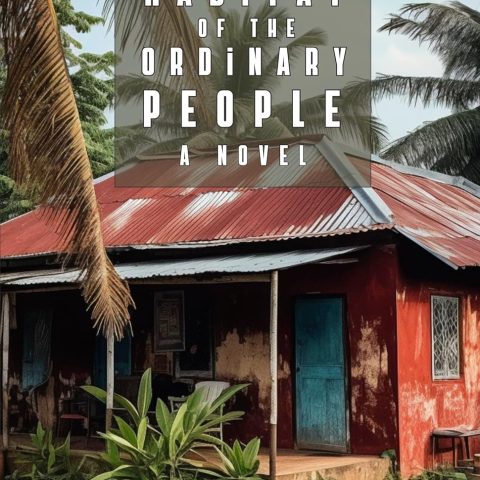An Archive of Ghana’s Past: The Adamah PapersBy Kirsty Abena Serwa | MisBeeeWritesMonday, October 1, 2018.Most recently, I have been following the discovery of old letters, documents and newspapers from an Ewe Fia (King) that formed the ‘Family Ties: Adamah Papers’ exhibition at the Black Cultural Archive (BCA) in Brixton, London.These Papers are significant because they are thought to be the first of their kind in Britain (and maybe the world) to document Ghana’s Ewe community in such a manner.One of the oldest letters found dated around the 1890s sent by an English officer to Fia Adamah IIThese Papers provide a snapshot of life in the royal household from the late 1800s to the 1940s and were donated by granddaughter to Fia Togbui Adamah II – Aunty Promise, who lives in east London.Old documentsNot only can visitors learn more about the Fia’s life and Ewe culture through the exhibition, but they can see, touch and read the original documents at the BCA’s Archive Library also.In April 2018, one month after the exhibition’s formal launch, I became the first member of the public to lay my (gloved) hands on these delicate artefacts.They say there’s something about a new book smell – well there’s something equally magical about touching and reading letters penned almost 90 years ago.Before I could access these letters, I had to make a formal request to the BCA Archives, outlining which of the archived material I wanted to see. I chose to focus on letters from one of Fia’s sons called Moses and old newspapers that the Fia had kept.MoneyTo say that Moses was a character would have to be an understatement. Most of the two hours I spent at the Archives were focussed on reading his colourful and often verbose letters to his dad. Most were dominated by the topic of money. Either Moses was thanking his dad for sending him some or he was asking for more.Moses’ use of the English language was what struck me more than anything as it provided some insight into his character, his level of education and his desires.In one letter dated 17th September 1930, he wrote:“Mr dear and honourable father, wilful and faithless hopes that my letters had reached you with no attention and response. I am writing now to know of your present exertions, in the governance of both national and family responsibilities.”Wow – never has ‘hello dad, how are you doing?’ sounded so poetic!In another letter, he bemoaned the fact that he was “terror stricken” because he was broke; was forced to buy two khakis because he didn’t have any trousers and was concerned about ‘wasting’ money on food!Higher learningThe Adamah family tree It turns out that Moses was fed up of the institution he was attending (I didn’t quite find out which) but wanted daddy to help him transfer to Cape Coast University, Oxford or Cambridge.In another appeal, Moses recounted how he sat for the Cadbury’s Competitive Scholarship exam but found out too late afterwards (which I thought was quite weird) that he was too old to apply.In all his trials to further his education he focussed on attending the Tuskegee Institute in Alabama, US, which offered Black people tertiary level education. This institute – which started out as a school but is now a university – was established on 4th July 1881 by Booker T Washington and Lewis Adams.It turns out Moses only had to fill in a form to gain free admission and could get a BSc after four years’ training. The plan afterwards was that he would come back to Accra and teach science at Achimota – the prestigious school (I presume). I never found out if he made it to the US but if he did it would be interesting to know how he felt navigating in a racially divided America and if he saw any correlation to his life in the then GoldCoast with its emerging racial divisions.As for him becoming a teacher of science – although laudable, I think his strengths definitely lay in writing/acting/ performance poetry or something else equally arty!!Family mattersSome more juicy tid bits emerged when Moses’ sister Esther revealed in her letter some of their brother James’ tawdry displays. She wrote her letter from Koforidua – an area I’ve lived in – and informed her father that James had been bad-mouthing him, and saying he had a taste for multiple women.It was true Fia had many wives but during the revelation, Esther pointed out that James, who was married then, was carrying on with anther woman himself. He was even caught by the police for stealing a goat and was lucky not to be imprisoned. The crux of the letter was to warn Fia but also get him to warn dear Moses not to follow James’ ill behaviour. I wonder why that was necessary – was Moses easily led?Images © MissBeeeWrites�
An Archive of Ghana’s Past: The Adamah Papers
No Comments currently posted | Add Comment
Comment on this Article
Your Name
Please provide your name
Your Comment
//set data for hoidden fields
//transfer();
var viewMode = 1 ;
//============================================================================
//HTML Editor Scripts follow
//============================================================================
function exCom(target,CommandID,status,value)
{
document.getElementById(target).focus();
document.execCommand(CommandID,status,value);
}
function transfer()
{
var HTMLcnt = document.getElementById(“ctl00_MainContent_txtComment_msgDiv1”).innerHTML;
var cnt = document.getElementById(“ctl00_MainContent_txtComment_msgDiv1”).innerText;
var HTMLtarget = document.getElementById(“ctl00_MainContent_txtComment_HTMLtxtMsg”)
var target = document.getElementById(“ctl00_MainContent_txtComment_txtMsg”)
HTMLtarget.value = HTMLcnt;
target.value = cnt;
}
function hidePDIECLayers(f,p)
{
//e.style.display = ‘none’
f.style.display = ‘none’
p.style.display = ‘none’
}
function toggle(e)
{
if (e.style.display == “none”)
{
e.style.display = “”;
}
else
{
e.style.display = “none”;
}
}
function ToggleView()
{
var msgDiv = document.getElementById(“ctl00_MainContent_txtComment_msgDiv1″);
if(viewMode == 1)
{
iHTML = msgDiv.innerHTML;
msgDiv.innerText = iHTML;
//alert(viewMode);
// Hide all controls
Buttons.style.display = ‘none’;
//selFont.style.display = ‘none’;
//selSize.style.display = ‘none’;
msgDiv.focus();
viewMode = 2; // Code
}
else
{
iText = msgDiv.innerText;
msgDiv.innerHTML = iText;
// Show all controls
Buttons.style.display = ‘inline’;
//selFont.style.display = ‘inline’;
//selSize.style.display = ‘inline’;
msgDiv.focus();
viewMode = 1; // WYSIWYG
}
}
function selOn(ctrl)
{
ctrl.style.borderColor = ‘#000000’;
ctrl.style.backgroundColor = ‘#ffffcc’;
ctrl.style.cursor = ‘hand’;
}
function selOff(ctrl)
{
ctrl.style.borderColor = ‘#9BC1DF’;
ctrl.style.backgroundColor = ”;
}
function selDown(ctrl)
{
ctrl.style.backgroundColor = ‘#8492B5’;
}
function selUp(ctrl)
{
ctrl.style.backgroundColor = ‘#B5BED6’;
}
�
Size 1
Size 2
Size 3
Size 4
Size 5
Size 6
Size 7
//give focus to the msgdiv… always otherwise save button will not save content.
var mDiv = document.getElementById(“ctl00_MainContent_txtComment_msgDiv1”);
try
{ mDiv.focus();}
catch(e)
{
//alert(‘Invisible’)
}
//if ( <> ‘none’)
//
Send to a friend | �
View/Hide Comments (0) | �





